Gabler, Christian Ernst (1770–1821): Publisher in Leipzig and from 1794 in Jena. Published Schelling’s Zeitschrift für spekulative Physik from 1800; after he was unable to pay the requisite honorarium, Schelling published Bruno as a book even though had had started publishing the piece in installments in his journal; the result was a lengthy lawsuit in which the Jena attorney Christian Assall represented Schelling. Gabler was also a potential publisher for Friedrich Schlegel’s projected transcendental philosophy.
Gabler, Johann Philipp (1753–1826): Theologian, from 1787 professor in Altdorf, from 1804 in Jena. Advocated the separation of historical-biblical theology, on the one hand, and dogmatics, on the other.
 Gabrielli, Caterina (“La cochetta”), née Fatta (1730–96): Italian soprano, took the last name of her patron in Rome. From 1755 at the court theater in Vienna, whither she returned from Italy in 1760, then 1772–75 at the court in St. Petersburg, thence to London (where Georg Christoph Lichtenberg heard her on 11 November 1775 in the role of Dido), finishing her career in Italy. One of the most admired sopranos of the age. (Portrait: 1751 by Pompeo Batoni.)
Gabrielli, Caterina (“La cochetta”), née Fatta (1730–96): Italian soprano, took the last name of her patron in Rome. From 1755 at the court theater in Vienna, whither she returned from Italy in 1760, then 1772–75 at the court in St. Petersburg, thence to London (where Georg Christoph Lichtenberg heard her on 11 November 1775 in the role of Dido), finishing her career in Italy. One of the most admired sopranos of the age. (Portrait: 1751 by Pompeo Batoni.)
Gage, Henry, 3rd Viscount Gage (1761–1808): Son of Thomas Gage (1719–87), the latter a British general and commander-in-chief of the North American forces from 1763 to 1775 during the early days of the American Revolution. While in America, Thomas Gage met Margaret Kemble of Brunswick, New Jersey, the daughter of a friend from Westminster School serving on the New Jersey council. The two were wed in December 1758. It is not entirely certain Caroline is referring to this son.
Galigaï d’Ancre (Leonora Dori) (1571–1617): An alleged Italian witch and favorite of Maria de Medici, mother of King Louis XIII. Maria de Medici and her courtiers took Dori’s (probable) epilepsy to be demonic possession and hired her to perform exorcism and white magic to counter curses, enabling Dori to earn a considerable sum of money. After Maria de Medici became regent (1610), Dori was arrested after the murder of her own husband in 1617 and executed for having practiced witchcraft and bewitched the regent.
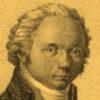 Gall, Franz Joseph (1758–1828): Sometimes viewed as the father of phrenology. Studied medicine in Strasbourg and Vienna, earning his doctorate in 1785 and beginning practice and anatomical studies of the nervous system there, especially of the brain in an attempt to localize the various brain functions. This method failing, he turned to demonstrating that constitutive relationships obtain between aliquot parts of the brain and certain mental faculties, relationships also coming to spatial expression. His experiments included comparative research on the external part of the brain, namely, the skull. His lectures on these findings in Vienna in 1796 brought him fame throughout Europe but were soon forbidden by those advocating the more materialistic view of the skull. He left Vienna and toured Germany, lecturing on his findings and often using various anecdotes and props such as skulls and casts. From 1807 in Paris, where he was subject to various criticisms (Portrait: frontispiece to Neue allgemeine deutsche Bibliothek 89,1 [1804].)
Gall, Franz Joseph (1758–1828): Sometimes viewed as the father of phrenology. Studied medicine in Strasbourg and Vienna, earning his doctorate in 1785 and beginning practice and anatomical studies of the nervous system there, especially of the brain in an attempt to localize the various brain functions. This method failing, he turned to demonstrating that constitutive relationships obtain between aliquot parts of the brain and certain mental faculties, relationships also coming to spatial expression. His experiments included comparative research on the external part of the brain, namely, the skull. His lectures on these findings in Vienna in 1796 brought him fame throughout Europe but were soon forbidden by those advocating the more materialistic view of the skull. He left Vienna and toured Germany, lecturing on his findings and often using various anecdotes and props such as skulls and casts. From 1807 in Paris, where he was subject to various criticisms (Portrait: frontispiece to Neue allgemeine deutsche Bibliothek 89,1 [1804].)
Gallatin (Galatin), Pierre, Count (1753–1822): native of Geneva and in 1783 a member of the Council of Two Hundred. He left Geneva in 1792 at the time of the Revolution and in 1796 was commended to Duke Karl Wilhelm Ferdinand von Braunschweig by Mallet dü Pan, thereafter receiving the title of Geheimer Legationsrath and serving as a chamberlain and trusted confidant to the duke in foreign affairs without, however, ever officially being in official Braunschweig state service (he accompanied the duke into what amounted to self-exile to Ottensen after the latter’s wounds in connection with the Battle of Auerstedt in 1806). From 1819 minister of Württemberg in Paris.
Gallisch, Friedrich Andreas (12 August 1754–15 February 1783): Studied in Schulpforta, Göttingen, and Leipzig, received his doctorate in medicine in 1777 in Leipzig, from 1782 associate professor there. In addition to his scholarly works in Latin and German, also wrote fiction. A friend of Christian Gottfried Körner, he contributed to the Göttinger Taschenkalender (ed. from 1778 by Georg Christoph Lichtenberg), and was posthumously praised by Lichtenberg in a letter to Johann Gottwerth Müller from Göttingen on 17 December 1785 (Lichtenberg, Briefe 2:247–48):
But I was personally acquainted with the excellent author of Nettgen Rosenfarb, who unfortunatley died much too early [of smallpox], and spent several evenings with him dining at the home of [publisher Johann Christian] Dieterich. His name was Gallisch, an apothecary’s son in Leipzig, where, if I am not mistaken, he also became a professor; a first-rate intellect whose treatise on dephlogistized saltpeter acid I certainly admire [Progr. de acido salis eiusque dephlogisticatione (Leipzig 1782)]. I have not read his Nettgen simply because I do not read any German novels, excepting perhaps those of a certain Herr Müller, whose acquaintance I also made at Dieterichs [i.e., the letter’s recipient!]. . .
 Gallitzin, Princess Adelheid Amalie von, née von Schmettau (1748–1806): Daughter of a Protestant Prussian field marshal and Catholic mother, educated in a Catholic convent, unusually well educated for a woman of the time, from 1765 lady-in-wating to Princess Louise of Prussia. 1768 married the later Russian envoy to Den Haag, Prince Dmitri Gallitzin (1738–1803), where she became acquainted with Voltaire and the circle of French Encyclopedists, including Denis Diderot. Keen on implementing Rousseau’s pedagogical ideal with her own children. After separating from her husband she moved to a country estate. Wore simple clothes in the Greek style and kept her hair cut short, quite in contrast to the regnant style for women, as one of Caroline’s letters documents. Both her children engaged in sports, her daughter also learning riding and fencing. From 1779 in Münster, where she became involved with the pedagogical reforms of Franz von Fürstenberg and entered into correspondence with literary personalities such as Johann Gottfried Herder, Johann Caspar Lavater, Friedrich Heinrich Jacobi, eventually also meeting Goethe in Weimar, and also giving instruction in various languages. Became friends with Johann Georg Hamann, who is buried in her garden in Münster. After becoming ill in 1783, she became interested in religion, returning to Catholicism in 1786 (having been educated in a Catholic boarding school in Breslau), and her salon becoming a meeting place for prominent persons in Münster, especially Catholics. (Portrait: unknown artist.)
Gallitzin, Princess Adelheid Amalie von, née von Schmettau (1748–1806): Daughter of a Protestant Prussian field marshal and Catholic mother, educated in a Catholic convent, unusually well educated for a woman of the time, from 1765 lady-in-wating to Princess Louise of Prussia. 1768 married the later Russian envoy to Den Haag, Prince Dmitri Gallitzin (1738–1803), where she became acquainted with Voltaire and the circle of French Encyclopedists, including Denis Diderot. Keen on implementing Rousseau’s pedagogical ideal with her own children. After separating from her husband she moved to a country estate. Wore simple clothes in the Greek style and kept her hair cut short, quite in contrast to the regnant style for women, as one of Caroline’s letters documents. Both her children engaged in sports, her daughter also learning riding and fencing. From 1779 in Münster, where she became involved with the pedagogical reforms of Franz von Fürstenberg and entered into correspondence with literary personalities such as Johann Gottfried Herder, Johann Caspar Lavater, Friedrich Heinrich Jacobi, eventually also meeting Goethe in Weimar, and also giving instruction in various languages. Became friends with Johann Georg Hamann, who is buried in her garden in Münster. After becoming ill in 1783, she became interested in religion, returning to Catholicism in 1786 (having been educated in a Catholic boarding school in Breslau), and her salon becoming a meeting place for prominent persons in Münster, especially Catholics. (Portrait: unknown artist.)
Gallitzin, Prince Dmitri (1738–1803): From 1768 husband of Princess Adelheid Amalie von Gallitzin, née von Schmettau Gallitzen; Russian ambassador in Paris, Turin, and from 1769 Den Haag under Catherine II.
Galvani, Luigi (1737–98): Italian physician and physicist, taught at Bologna, conducted research in electrophysiology concerning, e.g., muscular contraction, developing a theory of “animal electricity” as an inherent, vital force in animal tissue.
Gareis, Johann Franz (1775–1803): Studied at the Dresden Academy of Art from 1791, journeyed to Russia 1795/96 in the entourage of a nobleman. After returning to Dresden received an annual pension of 100 Thaler from the Saxon prince elector, became acquainted with Ludwig Tieck and Wilhelm Schlegel and joined a circle of young artists. From 1799 did numerous portraits in Leipzig, Berlin, and Vienna, as well as paintings with mythological themes and historical themes. From 1801 journeyed to Paris and Rome, where he fell ill; Wilhelm von Humboldt secured the best doctor in Rome for him, but Gareis died on 5 May 1803, and was buried in the cemetery near the Cestius Pyramid. Had been engaged to Louise (Luise) Reichardt, who was greatly affected by his death (Henrik Steffens recounts her grief in his memoirs). Did the portrait by which Novalis (Friedrich von Hardenberg) is best known. May have done a study of Auguste.
Steffens’s narrative concerning Gareis’s relationship with Luise Reichardt picks up immediately after the narrative cited in the supplementary appendix on Friedrich August Eschen, which speaks of Luise’s previous relationship with Eschen, who had died after falling into an ice crevasse in Switzerland (Steffens, Was ich erlebte, 6:94–96):
Several years passed before a new relationship emerged with a young, quite promising painter by the name of Gareis, whose acquaintance I myself had made earlier in Dresden at Tieck’s. Among the younger artists at the time, his talent was indeed extraordinary. He was fond, especially in the family, of turning out several paintings prima vista, and the bold assurance with which these paintings emerged under his hands elicited universal admiration. The hand drawings that he was wont to dash off during conversations (my wife still has quite a number of these) are quite meritorious by virtue not only of the accuracy and grace of the drawing itself, but also not infrequently their overall composition. From Rome he sent his fiancée a copy of Raphael’s Transfiguration in a smaller format, one of the most successful I have seen, the first painting by the great master that, alongside the Madonna, I ever saw (albeit only second hand) and which deeply moved me with the profundity of its composition. In Florence, however, he was stricken by an extremely severe case of dysentery and died within a few days. Although this double blow forever embittered poor Luise’s life, she did manage to control herself sufficiently not to be a burden because of it; indeed, she was often capable of taking such painful pleasure — this profound consciousness of dark grief lying over existence as such — from its nocturnal abyss and turning it into a proclamation of the imminent dawn of joy and serenity.
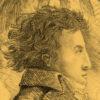 Garnerin, André-Jacques (1769–1823): A native of Paris, well known airship engineer, studied under Jacques Charles, inventor of the gas balloon. Till 1804 served as the official aeronaut in charge of public events. In 1797 made the first parachute jump (in 1799 his wife was the first woman parachutist). Garnerin afterward made hot-air balloon voyages in Russia and between Paris and a forest near Clausen in Germany; also performed at exhibitions in Germany. (Portrait: by Edward Hawke Locker during a baloon ascent on 5 July 1802. Library of Congress Prints and Photographs Division.)
Garnerin, André-Jacques (1769–1823): A native of Paris, well known airship engineer, studied under Jacques Charles, inventor of the gas balloon. Till 1804 served as the official aeronaut in charge of public events. In 1797 made the first parachute jump (in 1799 his wife was the first woman parachutist). Garnerin afterward made hot-air balloon voyages in Russia and between Paris and a forest near Clausen in Germany; also performed at exhibitions in Germany. (Portrait: by Edward Hawke Locker during a baloon ascent on 5 July 1802. Library of Congress Prints and Photographs Division.)
Garrick, David (1717–79): British actor and playwright, debuted in London in 1741 to great success, later proving his versatility in both comic and tragic roles. From 1747 one of the managers of Drury Lane, producing many of Shakespeare’s plays.
Gärtner, Barbara, née Sachs (1765–1818): Native of Würzburg. Her father was a royal page tutor, consultant at the imperial territorial court, and administrator at the Julius Hospital, her mother a singer at court, Maria Franziska Beuschel. From 1785 married to the architect Johann Andreas Gärtner. They had two daughters, one of whom was named Kunigunde, and one son, the later architect Friedrich Wilhelm von Gärtner (1791–1847).
Gärtner, Johann Andreas (6 August 1749 [1743 or 1744?]–5 November 1826): Architect, native of Dresden, worked first in Poland, Vienna, and Berlin, moving then to Paris, where he lived for nine years as architectural inspector for Versailles. Moved to Coblenz in the service of the prince elector and also received a military commission, moving to Würzburg then during the wars of the French Revolution, but still in the service of Trier. The prince bishop of Würzburg then engaged his services, including as a captain in the military. With the geopolitical changes of 1803, he passed into the service of the prince elector of Bavaria. After St. Anne’s Convent in Würzburg was dissolved on 4 June 1803, Julius von Soden purchased the building and in 1804 established a theater in it, which Würzburg previously did not have, according to Gärtner’s plans. Gärtner also established an operating room in the Julius Hospital. Appointed royal architect in Munich on 15 June 1804. (Information in part from NDB.)
Gärtner , Karl Christian (1712–14 February 1791): From 1745, at the initiative of Johann Friedrich Wilhelm Jerusalem, he became a docent (here: private lecturer) at the Collegium Carolinum in Braunschweig, from 1748 professor of rhetoric and morality; also a friend of Johann Adolf Schlegel, Johann Arnold Ebert, Konrad Arnold Schmid, and Friedrich Gottlob Klopstock. Editor of the Bremer Beiträge.
Gärtner, Kunigunde (born before 1791): On of the two daughters of Johann Andreas and Barbara Gärtner in Würzburg. Later married to Karl Klumpp. She had a sister (name unknown) and a younger brother, the architect Friedrich Wilhelm von Gärtner [1791–1847).
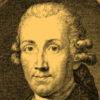 Garve, Christian (1742–98): Philosopher, writer, translator. From 1726 studied theology, philosophy, and mathematics in Frankfurt an der Oder and Halle, from 1766 in Leipzig, from 1769(68?) professor of moral philosophy in Leipzig, 1772 returned to his hometown of Breslau for health reasons, where he then lived as a writer. Published works in a popular vein on eclectic subjects that were much admired by Schiller as well as reviews (e.g., of Lessing’s essay on Laokoon, oder über die Grenzen der Malerei und Poesie [1766]). Also translated Adam Ferguson and Edmund Burke from the English, thereby also influencing Schiller. (Portrait: frontispiece to Allgemeine deutsche Bibliothek 101 [1791].)
Garve, Christian (1742–98): Philosopher, writer, translator. From 1726 studied theology, philosophy, and mathematics in Frankfurt an der Oder and Halle, from 1766 in Leipzig, from 1769(68?) professor of moral philosophy in Leipzig, 1772 returned to his hometown of Breslau for health reasons, where he then lived as a writer. Published works in a popular vein on eclectic subjects that were much admired by Schiller as well as reviews (e.g., of Lessing’s essay on Laokoon, oder über die Grenzen der Malerei und Poesie [1766]). Also translated Adam Ferguson and Edmund Burke from the English, thereby also influencing Schiller. (Portrait: frontispiece to Allgemeine deutsche Bibliothek 101 [1791].)
 Gaspari, Adam Christian (1752–1830): From 1795 professor of philosophy in Jena, from 1797 at the Gymnasium in Oldenburg, from 1803 professor of history, geography and statistics in Dorpat, and from 1810 in Königsberg. As a young girl, Luise Michaelis had him as her private tutor in geography and biblical history; she found him “repugnant,” though Charlotte von Einem, Aus dem Nachlass Charlottens von Einem: Ungedruckte Briefe von Hölty, Voss, Boie, Overbeck u.a. Jugenderinnerungen, ed. Julius Steinberger (Göttingen 1923), 132, extols his wit. (Portrait: Allgemeine geographische Ephemeriden, vol. 14 [Weimar 1804].)
Gaspari, Adam Christian (1752–1830): From 1795 professor of philosophy in Jena, from 1797 at the Gymnasium in Oldenburg, from 1803 professor of history, geography and statistics in Dorpat, and from 1810 in Königsberg. As a young girl, Luise Michaelis had him as her private tutor in geography and biblical history; she found him “repugnant,” though Charlotte von Einem, Aus dem Nachlass Charlottens von Einem: Ungedruckte Briefe von Hölty, Voss, Boie, Overbeck u.a. Jugenderinnerungen, ed. Julius Steinberger (Göttingen 1923), 132, extols his wit. (Portrait: Allgemeine geographische Ephemeriden, vol. 14 [Weimar 1804].)
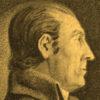 Gatterer, Johann Christoph (1727–99): From 1759 professor of history in Göttingen, where in 1764 he established the Historical Academy (from 1766 “Historical Institute”); active in publishing editions of medieval historical documents. Father of Philippine Gatterer. (Portrait: frontispiece to Neue allgemeine deutsche Bibliothek 46, 1 [1799].)
Gatterer, Johann Christoph (1727–99): From 1759 professor of history in Göttingen, where in 1764 he established the Historical Academy (from 1766 “Historical Institute”); active in publishing editions of medieval historical documents. Father of Philippine Gatterer. (Portrait: frontispiece to Neue allgemeine deutsche Bibliothek 46, 1 [1799].)
 Gatterer, Magdalene Philippine (1756–1831): Lyric poet, daughter of Göttingen professor Johann Christoph Gatterer. Born in Nürnberg, grew up in Göttingen, married Hessian-Kassel Kriegsrath and Geheimer Rath Johann Philipp Engelhard (1753–1818) on 23 November 1780, with whom she had ten children. Met Georg Forster in 1778 and corresponded with him concerning her poetry. Contributed under pseudonyms (Juliane S., Caroline, Rosalia) and her own name to the Göttinger Musenalmanach from 1776, published several volumes of successful poems, Gedichte (Göttingen 1778; 1782; Nürnberg 1821). Corresponded with the poet Gottfried August Bürger, albeit allegedly without any lasting influence on her poetry. Her Anacreontic poetry generally involves sentimental, often pastoral themes of friendship, love, domestic joys, and loss. The edition of her poems published by Johann Christian Dieterich in Göttingen, with five engravings by Daniel Nikolaus Chodowiecki, included four of her poems set to music by Ernst Christoph Dressler, and was a great commercial success. (Portrait: Johann Heinrich Tischbein.)
Gatterer, Magdalene Philippine (1756–1831): Lyric poet, daughter of Göttingen professor Johann Christoph Gatterer. Born in Nürnberg, grew up in Göttingen, married Hessian-Kassel Kriegsrath and Geheimer Rath Johann Philipp Engelhard (1753–1818) on 23 November 1780, with whom she had ten children. Met Georg Forster in 1778 and corresponded with him concerning her poetry. Contributed under pseudonyms (Juliane S., Caroline, Rosalia) and her own name to the Göttinger Musenalmanach from 1776, published several volumes of successful poems, Gedichte (Göttingen 1778; 1782; Nürnberg 1821). Corresponded with the poet Gottfried August Bürger, albeit allegedly without any lasting influence on her poetry. Her Anacreontic poetry generally involves sentimental, often pastoral themes of friendship, love, domestic joys, and loss. The edition of her poems published by Johann Christian Dieterich in Göttingen, with five engravings by Daniel Nikolaus Chodowiecki, included four of her poems set to music by Ernst Christoph Dressler, and was a great commercial success. (Portrait: Johann Heinrich Tischbein.)
Gedike, Friedrich (1754–1803): Pedagogue. From 1771 studied theology and ancient languages in Frankfurt an der Oder. From 1775 private tutor in Berlin, from 1776 deputy director of the famous Friedrich Werder Gymnasium there, from 1779 director. From 1784 appointed to the senior consistory council, where he was able to effect pedagogical reforms in the Prussian educational system. From 1790 member of the Berlin Academy of Sciences and Humanities and Academy of Arts. Gedike also frequented the Berlin Wednesday Society and the Monday Club. Introduced the Abitur (concluding examination) at Berlin secondary schools in 1788.
Gehlen, Adolf Ferdinand (1775–1815): Chemist, initially trained as an apothecary, attained his doctorate in Halle in 1806, from 1807 a member of the Bavarian Academy of Sciences and Humanities in Munich as an “academic chemist.”
Geist, Johann Ludwig (1776–1856): Goethe’s scribe and valet from 1795 to 1804. Attended the pedagogical school in Weimar in 1795, knew Latin, was musically inclined (organ), and had considerable knowledge of botany. Accompanied Goethe to Switzerland in 1797. From 1804 a civil servant.
Gelbke, Madam (dates unknown): Wife of senior consistory councilor and historian Johann Heinrich Gelbke (15 June 1746–26 August 1822) in Gotha. Mentioned together with her sister Madam Grabstich in letters 143, 144, 147, and 148, as two sisters Caroline had known earlier in Gotha but whom she was hesitant to visit because of Madam Gelbke’s unsympathetic attitude toward Caroline’s plight after Mainz. Madam Gelbke allegedly told Luise Gotter concerning Caroline’s plight: “It serves her right; why did she bring it on herself?” (The Gelbke’s son Julius eventually married Elisabeth Schlözer [1783–1818], daughter of August Ludwig Schlözer in Göttingen.)
 Gellert, Christian Fürchtegott (1715–69): Poet, moral philosopher, writer. From 1744 professor of poetry, rhetoric, and ethics in Leipzig, where in his inaugural lecture he came out in favor of the comédie larmoyante. Best known for his fables and stories and for his Leipzig lectures on moral themes, though he also wrote comedies in a sentimental tone. A transitional figure in eighteenth-century German literature, Gellert was the most widely read author before Goethe, thereby broadly influencing literature between the Enlightenment, sentimentality, and Storm and Stress. (Portrait: in Gustav Könnecke, Bilderatlas zur Geschichte der deutschen Nationallitteratur, 2nd ed. [Marburg 1895], 214.)
Gellert, Christian Fürchtegott (1715–69): Poet, moral philosopher, writer. From 1744 professor of poetry, rhetoric, and ethics in Leipzig, where in his inaugural lecture he came out in favor of the comédie larmoyante. Best known for his fables and stories and for his Leipzig lectures on moral themes, though he also wrote comedies in a sentimental tone. A transitional figure in eighteenth-century German literature, Gellert was the most widely read author before Goethe, thereby broadly influencing literature between the Enlightenment, sentimentality, and Storm and Stress. (Portrait: in Gustav Könnecke, Bilderatlas zur Geschichte der deutschen Nationallitteratur, 2nd ed. [Marburg 1895], 214.)
Gemmingen, Karl Friedrich Reinhard von (1739–1822): Minster in Ansbach, last general director of the Knights of the Empire (Reichsritterschaft). From 1801 in Vienna, where he tried to gain the support of the emperor for the Knights of the Empire during the radical changes to the Empire itself; 1802/03 represented the Knights of the Empire at the special imperial session (Reichsdeputation) that sealed the fate of the Empire. After the mediatisation of the Knights of the Empire in 1805/06, he became a state and cabinet minister in Baden.
Genast (real name: Kynast), Anton (1763–1831): Actor and singer whose family originally destined him to become a priest; he fled his family but was unsuccessful in establishing himself in Breslau, after which he travelled with itinerant companies before being engaged in Prague, where he also met Mozart. From 1791 in Weimar, where he also became stage director, remaining till 1817.
Genast, Eduard Franz (1797–1866): Actor, singer, composer, theater director, son of Anton Genast in Weimar, the latter of whom opposed his plans to become an actor just as his father had opposed his own plans. But the younger Genast debuted in Weimar on 23 April 1814, afterward performing in Stuttgart, Dresden, Hannover, Prague, and Leipzig. From 1828 theater director in Magedeburg, though from 1829 he was already back in Weimar.
 Genelli, Hans Christian (1763–1823): Architect, classical scholar, art critic. Married to Karoline Finckenstein. Less a practicing architect than a theorist, his interests in fact extended to all the arts. Spent time in Rome with his brother to complete his training as an artist (1785–90). From 1791 worked in porcelain manufacturing in Berlin and on china decoration, frequented the salon of Rahel Levin, also published on the arts in general, e.g., his Idee einer Akademie der bildenden Künste (Braunschweig, 1800) and Das Theater zu Athen, nach Architektur, Szenerie und Darstellungskunst (1818). (Portrait: extract from a group portrait, possibly 1818, by Johann Erdmann Hummel.)
Genelli, Hans Christian (1763–1823): Architect, classical scholar, art critic. Married to Karoline Finckenstein. Less a practicing architect than a theorist, his interests in fact extended to all the arts. Spent time in Rome with his brother to complete his training as an artist (1785–90). From 1791 worked in porcelain manufacturing in Berlin and on china decoration, frequented the salon of Rahel Levin, also published on the arts in general, e.g., his Idee einer Akademie der bildenden Künste (Braunschweig, 1800) and Das Theater zu Athen, nach Architektur, Szenerie und Darstellungskunst (1818). (Portrait: extract from a group portrait, possibly 1818, by Johann Erdmann Hummel.)
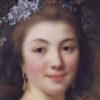 (Genlis) Stéphanie-Félicité Ducrest de Saint-Aubin, Comtesse de Bruslart de Genlis and Marquise de Silléry (1746–1830): French writer. From 1762 wife of Charles-Alexis Brûlart, Marquis de Sillery, Comte de Genlis in Paris, who was beheaded in 1793 as a Girondin. From 1770 lady-in-waiting to the duchesse de Chartres and governess to her children after being mistress to the duke de Chartres. Emigrated in 1793 (England, Switzerland), returning to France in 1802. Prolific writer of popular romances and memoirs. (Portrait by Jacques-Antoine-Marie Lemoine.)
(Genlis) Stéphanie-Félicité Ducrest de Saint-Aubin, Comtesse de Bruslart de Genlis and Marquise de Silléry (1746–1830): French writer. From 1762 wife of Charles-Alexis Brûlart, Marquis de Sillery, Comte de Genlis in Paris, who was beheaded in 1793 as a Girondin. From 1770 lady-in-waiting to the duchesse de Chartres and governess to her children after being mistress to the duke de Chartres. Emigrated in 1793 (England, Switzerland), returning to France in 1802. Prolific writer of popular romances and memoirs. (Portrait by Jacques-Antoine-Marie Lemoine.)
Gentz, Heinrich (1766–1811): Architect in Prussian service. From 1779 in Berlin as mint director. Brother of the historian Friedrich von Gentz. From 1783 to 1790 trained in Berlin as an architect, from 1790 to 1795 studied in Italy, returned to Berlin and worked in the royal construction administration, from 1796 also at the Academy of Fine Arts, also cofounding the Berlin Bauakademie. From 1801 in Weimar at Goethe’s initiative to work on the renovations to the royal residence and other projects. Returned to Berlin in 1803.
Gern, Johann Georg (1757–1830): Opera singer (bass), actor. Broke off his study of theology for financial reasons and turned to singing. Debuted in 1780 in the Mannheim National Theater, thereafter performing comic rolls in singspiels and supporting roles in plays. Left Mannheim in 1794 because of political developments and in 1795 became engaged in the royal theater in Munich. After successful guest performances in Berlin, August Wilhelm Iffland brought him there permanently as the bass singer in 1801, where he debuted as Sarastro in the Magic Flute. Enjoyed sensational success with her performance in the Water Bearer in March 1802.
George II (George Augustus) (1683–1760): From 1727 king of England, also elector of Hannover, grandfather of George III. Last British monarch born outside Great Britain itself (Hannover). Whereas George III never visited Germany, George II did so; in fact, the university in Göttingen, which was founded at his behest by Gerlach Adolph von Münchhausen in 1734 and opened in 1737, was named for him (Georgia Augusta). He visited Göttingen in 1748.
George of Hannover (4 June 1738–1820): George III, from 1760 till 1801 king of Great Britain and Ireland, thereafter of the United Kingdom of Great Britain and Ireland. Concurrently duke of Braunschweig-Lüneburg and prince elector and (from 1814) king of Hannover (the electorate becoming the Kingdom of Hannover in 1814), from 1761 married to Charlotte of Mecklenburg-Strelitz. Third British monarch of the House of Hannover and the first to be born in Britain and speak English as his first language. Indeed, he never even visited Germany, though three of his sons studied in Göttingen and were acquainted with the Michaelis family:
Sons involved in Caroline’s life included:
George Augustus Frederick (1762–1830): Eldest child and eldest son of George III of England; Duke of Cornwall, Duke of Rothesay, then created Prince of Wales and Earl of Chester, whence Caroline’s designation as the “Prince of Wales.” As George IV he was king of the United Kingdom of Great Britain and Ireland and also of Hannover from the death of his father on 29 January 1820 until his own death in 1830. From 1811 until his accession, he served as Prince Regent during his father’s bouts with mental illness. At an early age known for his extravagance, dissipation, and drinking, which brought him into considerable conflict with his father.
Frederick of York, Prince Frederick August, Prince of Great Britain and Ireland, Duke of York and Albany, Duke of Braunschweig and Lüneburg, Bishop of Osnabrück (1763–1827): Second child and second son of King George III of England. On 27 February 1764, when Prince Frederick was six months old, his father secured his election as Prince-Bishop of Osnabrück (whence Caroline’s primary designation), the prince-electors of Hannover (which included his father) being entitled to select every other holder of this title (in alternation with the Holy Roman Emperor), to which considerable revenues accrued, and the king apparently decided to ensure that the title remained in the family for as long as possible. He was, however, the last bishop of Osnabrück, since in 1803, during the secularization preceding the dissolution of the Holy Roman Empire, the bishopric was incorporated into Hannover. From 1781 to 1787, when Caroline mentions him, he was living in Hannover, where he attended the manoeuvres of the Austrian and Prussian armies and studied (along with his younger brothers, Prince Ernest, Prince Edward, Prince Augustus, and Prince Adolphus) at the University of Göttingen. In 1791 he married Princess Friederike of Prussia, first daughter of Friedrich Wilhelm II. From 1793 he commanded the British Hannoverian Army in the Netherlands (Gottfried Philipp Michaelis served under his command as a field physician) but suffered a series of defeats amply demonstrating his military ineptness, in spite of which he repeatedly received the similar commissions from the king (1795, 1799) and later his brother (1811). (Portrait: 1788; Royal Collection of the British Royal Family.)
William IV (William Henry) (1765–1837): Third child and third son of George III of England; from 26 June 1830 King of the United Kingdom of Great Britain and Ireland and of Hannover; last king of the House of Hannover, though he never visited Hannover as its king (Prince Adolphus, Duke of Cambridge, acting as viceroy instead). As rector of the university in Göttingen, he established the Aula, or main assembly building during the centennial celebration in 1837; the square in front was then renamed in his honor, the only monument to a British king on German soil.
Gerning, Johann Isaak von (14 November 1767–21 February 1837): Frankfurt diplomat, merchant, author of travelogues, and poetaster. After apprenticing as a merchant, studied at the university in Jena, esp. history and political science; spoke seven languages. Was present in Frankfurt in 1790 at the election of Emperor Leopold II, where Gerning attracted the attention of the King and Queen of Naples, who invited him to Naples; in 1797 he became a legation administrative official of the Kingdom of Naples (King Ferdinand IV of Naples). He visited Switzerland, Holland, England, and France, and also passed through Weimar. Published several respected travelogues, e.g., Die Rheingegenden von Mainz bis Köln (1819). Made Goethe’s acquaintance in 1793. In Naples became familiar with the classical formative arts. In 1798 represented Naples at the Congress of Rastadt. Withdrew to private life, occupying himself with art and science and spending the winters in Weimar till 1802. From 1804 privy counselor to the Landgrave of Hessen-Homburg, from 1809 in the service of the Grand Duke of Hessen. Ennobled by the emperor. In 1816 represented the Landgrave of Hessen-Homburg in Frankfurt, from 1818 in London. Also composed poetry. Owned significant collection of paintings, drawings, copper engravings, sculpture, and Greek coins.
Gerstenberg, Heinrich Wilhelm von (1737–1823): Writer, military officer, diplomat. The son of a Danish military officer, studied law in Jena from 1751 and then from 1760 worked variously for the Danish government in the military or in administrative positions, including in Copenhagen and Lübeck. Published his first literary works in 1759. In Copenhagen frequented the literary circle around Friedrich Gottlob Klopstock, who introduced him to old Nordic poetry. Anticipated the literary movement of Storm and Stress, to which his own play Ugolino (1768) is to be reckoned.
Gervinus, Georg Gottfried (1805–1871): Professor of history in Göttingen but dismissed as one of the “Göttingen 7” (as a colleague of Friedrich Christoph Dahlmann; the latter had married Julie von Hegewisch, whom he had met in Luise Wiedemann’s, née Michaelis home in Kiel). Later a professor in Heidelberg. Dismissed yet again for having predicted Germany would eventually have a democratic constitution. As a literary historian was the first to incorporate literary history into German national history.
Gessner, Heinrich (1768–1813): Zürich publisher, son of the engraver, painter, and writer Salomon Gessner; husband of Charlotte Wieland (daughter of Christoph Martin Wieland).
Geyer, Johann Joseph (13 December 1767–22 June 1831): Native of Memmelsdorf; Bamberg lawyer, defended Bamberg boatsmen in a financial grievance against shipments to Vienna. From April 1795 married to Margaretha Apollonia Josepha, née Paul (1774–1845). From late 1800 promoted to prince-bishop Hofrath in Bamberg. During 1802–3 member of the Bavarian commission that took possession of Bamberg. From 10 May 1803 an administrator in the Franconian territorial directory, in which capacity he worked with Stephan Christian von Stengel in enhancing both the town of Bamberg and the Theresia Grove (see Bamberg gallery). From May 1806 senior administrator in the Bavarian territorial judicial authority in Bamberg following the transfer of previous administrators to electoral Würzburg service (Caroline speaks about him in this capacity). From 29 September 1808 till his retirement on 24 December 1821 senior appeals court councilor in Munich.
Gibbon, Edward (1737–94): English member of parliament (1774–80; 1781–83) and historian; studied in Lausanne, Switzerland, where he became engaged to Suzanne Curchod (1739–94), though his father convinced him to break off the engagement (she later married Jacques Necker and became the mother of Germaine de Staël). Gibbon is best known as a historian and author of the monumental The History of the Decline and Fall of the Roman Empire, 6 vols. (London 1776–88), to which he was inspired while roaming around the ruins of the Capitol in Rome.
Gilbert, Ludwig Wilhelm (1769–1824): Physicist in Halle, where he himself was a student from 1786, receiving his doctorate in 1794 and thereafter lecturing privately in mathematics there. From 1795 associate professor with a position at the observatory as well. From 1798 also lectured in physics, from 1801 full professor of physics and chemistry, from 1811 in Leipzig.
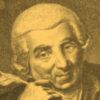 Gleim, Johann Wilhelm Ludwig (1719–1803): While studying philosophy and law in Halle 1738–40, Gleim met other writers who eventually took the Latin poet Anacreon as their model, whence the name Anacreontics, a style he maintained throughout his life. Eventually became a canon of Halberstadt (1747), where he continued writing and also supported newer writers (including Jean Paul), eventually becoming known as “Papa Gleim.” Quite popular during his lifetime, including for some patriotic Prussian poetry. (Portrait: in Gustav Könnecke, Bilderatlas zur Geschichte der deutschen Nationallitteratur, 2nd ed. [Marburg 1895], 216.)
Gleim, Johann Wilhelm Ludwig (1719–1803): While studying philosophy and law in Halle 1738–40, Gleim met other writers who eventually took the Latin poet Anacreon as their model, whence the name Anacreontics, a style he maintained throughout his life. Eventually became a canon of Halberstadt (1747), where he continued writing and also supported newer writers (including Jean Paul), eventually becoming known as “Papa Gleim.” Quite popular during his lifetime, including for some patriotic Prussian poetry. (Portrait: in Gustav Könnecke, Bilderatlas zur Geschichte der deutschen Nationallitteratur, 2nd ed. [Marburg 1895], 216.)
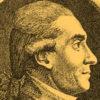 Göckingk, Leopold Friedrich (von) (1748–1828): Rococo-influenced poet, epigrammatist, Prussian civil servant in various locales. 1775–79 editor of the Göttinger Musenalmanach after Johann Heinrich Voss left and established a parallel Musen-Almanach in Hamburg. (Portrait: Gustav Könnecke, Bilderatlas zur Geschichte der deutschen Nationallitteratur, 2nd ed. [Marburg 1895], 265.)
Göckingk, Leopold Friedrich (von) (1748–1828): Rococo-influenced poet, epigrammatist, Prussian civil servant in various locales. 1775–79 editor of the Göttinger Musenalmanach after Johann Heinrich Voss left and established a parallel Musen-Almanach in Hamburg. (Portrait: Gustav Könnecke, Bilderatlas zur Geschichte der deutschen Nationallitteratur, 2nd ed. [Marburg 1895], 265.)
Gmelin, Georg Adam (1721–99): From 1771 general quartermaster, conscription commissar, from 1784 major general in Frankfurt.
Gmelin, Johann Friedrich (1748–1804): Chemist, professor in Göttingen. A native of Tübingen, he earned his doctorate there in 1769, afterward traveling extensively in Holland, England, the Netherlands, Germany, and Vienna. From 1772 professor of medicine in Tübingen, from 1778 in Göttingen, where he earned a second doctorate (philosophy) in 1779.
Goedeke, Karl (1814–87): Literary historian, private scholar, professor in Göttingen, author of a comprehensive history of German literature whose new editions became the standard bibliographical reference work for the field and are still useful today, Grundrisz zur Geschichte der deutschen Dichtung aus den Quellen, (1859–81; 2nd and 3rd editions, 15 vols., Dresden 1884–1966).
Goethe, Catharina Elisabeth, née Textor (1731–1808): Goethe’s mother; also called Frau Rath. Daughter of a Frankfurt patrician family, married Johann Caspar Goethe at seventeen. Became interested in literature especially after her son’s initial successes. Also became close friends with Bettina Brentano (Arnim) later.
 Goethe, Johann Wolfgang von (1749–1832): Poet, natural scientist, administrator at the Weimar court. Broadly educated at home until beginning law studies in Leipzig in 1765 (though he had wanted to study languages in Göttingen), where he became acquainted with all facets of the city’s cultural life, including the theater. Returned to Frankfurt in 1768 because of illness, continued his law studies in Strasbourg in 1770, where he also met Herder for the first time, who introduced him to Shakespeare and folk songs. After earning his degree, he returned to Frankfurt in 1771 and began practicing law before moving to the imperial court of appeals in Wetzlar. After falling in love with an engaged woman there, he voluntarily left Wetzlar and returned to Frankfurt, where he wrote the epistolary novel The Sufferings of Young Werther as a means of dealing with his disappointment; the novel quickly made him famous all over Europe. After an ill-fated engagement to a Frankfurt woman (Anna Elisabeth Schönemann in 1775), he accepted an invitation to the court of Duke Karl August von Sachsen-Weimar. In Weimar he quickly became an able administrator in various capacities. After two years in Italy (1786–88), during which his artistic sensibility was enduringly influenced by ancient art, he returned to Weimar, also becoming director of the new Weimar court theater in 1791 and relieved of many of his more tedious administrative duties. The mistress he took into his house, Christiane Vulpius (to whom Caroline will refer), who later (1806, during the French occupation of Weimar) became his wife, bore him a son in 1789 (August Goethe). He took part in the Prussian military campaign in France in 1792 as part of Duke Karl August’s entourage and witnessed the siege of Mainz in 1793; he visited Georg and Therese Forster there, where he also encountered Caroline. Goethe began working more closely with Schiller in 1794 as a contributor to the latter’s periodical Die Horen, commencing an intellectual friendship that would last until Schiller’s death in 1805. In 1816, after modernization of the administration of Sachsen-Weimar and the latter’s elevation to a grand duchy, Goethe was appointed head of all the duchy’s artistic and scientific institutions, a position he held till his death. (Portrait: by Johann Heinrich Lips.)
Goethe, Johann Wolfgang von (1749–1832): Poet, natural scientist, administrator at the Weimar court. Broadly educated at home until beginning law studies in Leipzig in 1765 (though he had wanted to study languages in Göttingen), where he became acquainted with all facets of the city’s cultural life, including the theater. Returned to Frankfurt in 1768 because of illness, continued his law studies in Strasbourg in 1770, where he also met Herder for the first time, who introduced him to Shakespeare and folk songs. After earning his degree, he returned to Frankfurt in 1771 and began practicing law before moving to the imperial court of appeals in Wetzlar. After falling in love with an engaged woman there, he voluntarily left Wetzlar and returned to Frankfurt, where he wrote the epistolary novel The Sufferings of Young Werther as a means of dealing with his disappointment; the novel quickly made him famous all over Europe. After an ill-fated engagement to a Frankfurt woman (Anna Elisabeth Schönemann in 1775), he accepted an invitation to the court of Duke Karl August von Sachsen-Weimar. In Weimar he quickly became an able administrator in various capacities. After two years in Italy (1786–88), during which his artistic sensibility was enduringly influenced by ancient art, he returned to Weimar, also becoming director of the new Weimar court theater in 1791 and relieved of many of his more tedious administrative duties. The mistress he took into his house, Christiane Vulpius (to whom Caroline will refer), who later (1806, during the French occupation of Weimar) became his wife, bore him a son in 1789 (August Goethe). He took part in the Prussian military campaign in France in 1792 as part of Duke Karl August’s entourage and witnessed the siege of Mainz in 1793; he visited Georg and Therese Forster there, where he also encountered Caroline. Goethe began working more closely with Schiller in 1794 as a contributor to the latter’s periodical Die Horen, commencing an intellectual friendship that would last until Schiller’s death in 1805. In 1816, after modernization of the administration of Sachsen-Weimar and the latter’s elevation to a grand duchy, Goethe was appointed head of all the duchy’s artistic and scientific institutions, a position he held till his death. (Portrait: by Johann Heinrich Lips.)
Goethe, Julius August Walther von (1789–1830): Son of the writer Goethe, who bestowed legitimacy on his son in 1808 (who was born out of wedlock). Studied law in Heidelberg and Jena before entering the service of Sachsen-Weimar in 1811. Assisted his father in theater matters and in directing various state artistic and scientific institutions, including construction projects, as well as with his father’s scientific collections and research. Unhappily married to Ottilie von Pogwisch (from 1817), with whom he had two sons. Died of scarlet fever during a trip to Italy (where he was trying to find relief from both professional and family problems) in 1830.
Goethe, Kathinka (16 December 1802–19 December 1802): Goethe and Christiane Vulpius’s fifth child.
 Goeze, Johann Melchior (1717–86): Lutheran theologian, from 1755 senior pastor in St. Catherine’s in Hamburg, defender of orthodox thinking, opponent of the Enlightenment — in which capacity he was also a resolute adversary of Ludwig Tieck’s father-in-law, Julius Gustav Alberti — best known because of his controversy with Gotthold Ephraim Lessing. From 1774, Lessing edited the deistic fragments of Hermann Samuel Reimarus, which involved, among other things, understanding the disciples’ resurrection narratives as a deception, a conclusion Reimarus had reached on the basis of comparative textual studies. Goeze became involved in the dispute with Lessing, who exposed Goeze in his publication Anti-Goeze (1778), a series of eleven virulently, even violently polemical pamphlets. The controversy was forcibly stopped by Lessing’s employer, the Duke of Brunswick, in July 1778. (Portrait: in Gustav Könnecke, Bilderatlas zur Geschichte der deutschen Nationallitteratur, 2nd ed. [Marburg 1895], 233.)
Goeze, Johann Melchior (1717–86): Lutheran theologian, from 1755 senior pastor in St. Catherine’s in Hamburg, defender of orthodox thinking, opponent of the Enlightenment — in which capacity he was also a resolute adversary of Ludwig Tieck’s father-in-law, Julius Gustav Alberti — best known because of his controversy with Gotthold Ephraim Lessing. From 1774, Lessing edited the deistic fragments of Hermann Samuel Reimarus, which involved, among other things, understanding the disciples’ resurrection narratives as a deception, a conclusion Reimarus had reached on the basis of comparative textual studies. Goeze became involved in the dispute with Lessing, who exposed Goeze in his publication Anti-Goeze (1778), a series of eleven virulently, even violently polemical pamphlets. The controversy was forcibly stopped by Lessing’s employer, the Duke of Brunswick, in July 1778. (Portrait: in Gustav Könnecke, Bilderatlas zur Geschichte der deutschen Nationallitteratur, 2nd ed. [Marburg 1895], 233.)
Goldoni, Carlo (1707–93): Italian playwright who often also wrote in the Venetian or Tuscan dialect of Italian and in French. Initiator of the modern Italian comedy. Emigrated to France in 1762 because of artistic and critical quarrels in Italy initiated by some of his contemporaries. His comedies variously maintain the dynamic energy of the earlier commedia dell-Arte and masked plays, with characters who often speak in their traditional dialects, while introducing comedic intrigue and a greater element of realism.
Gore, Charles (1726[7?]–1807): Wealthy English merchant and art afficionado from Lincolnshire, moved to Italy in 1773 because of his wife’s health († 1785). Daughters Emily (1760–1826, buried in Weimar) and Elisabeth (Elise). Made the acquaintance of Duke Karl August in Pyrmont, who became quite fond of Emily, thereby also generating considerable gossip. The family visited Weimar in 1787 and 1788, then moved there in 1791, thereafter frequenting court circles and socializing with Goethe as well.
Görres, Johann Joseph von (1776–1848): Publicist, writer. Founder and first editor of the Rheinischer Merkur (1814). Initially a supporter of the French Revolution, he later (1800) became an ardent German nationalist. From 1806 lectured on philosophy in Heidelberg, where he became friends with Achim von Arnim and Clemens Brentano and one of the initiators of the second phase of German Romanticism.
 Göschen, Georg Joachim (1752–1828): Leipzig publisher, important friend to Caroline during her pregnancy in 1793 (she initially stayed in his house in Leipzig on arriving from Frankfurt with Wilhelm Schlegel in July 1793; Göschen then secured her a more private place to live in Lucka, south of Leipzig), and an early publishing correspondent of Wilhelm Schlegel. After apprenticing in the bookseller’s trade in Bremen, Göschen worked for fifteen years with a publisher in Leipzig, during which time he also became acquainted with Leipzig society, including Christian Gottfried Körner, who provided the financial assistance Göschen needed to establish his own publishing house in 1785. Göschen became acquainted with Christoph Martin Wieland and others on a trip to Gotha and Weimar in 1785, including Friedrich Justin Bertuch, who ultimately introduced him to Goethe, after which he also became acquainted with Schiller. Göschen’s publishing house was so successful he was able to pay Körner back in 1788. In 1838 his publishing house was incorporated into the J. C. Cotta publishing company in Tübingen, but in the meantime had published numerous well-known authors of the time, including Schiller, Goethe, Wieland, Friedrich Gottlob Klopstock, Gotthold Ephraim Lessing, Friedrich August Wolf, August Wilhelm Iffland, and others, though also Schiller’s journals Thalia and Neue Thalia, Wieland’s Der Teutsche Merkur, the first legitimate edition of Goethe’s works (1787–90), and Schiller’s Don Carlos (1787). Also employed or introduced innovative printing practices, equipment, fonts, etc. His publishing house became independent again in 1868 and in 1919 was incorporated into Walter de Gruyter. Göschen’s grandson’s biography of him provides considerable information about Caroline and Wilhelm. (Portrait: frontispiece to Viscount Goschen, The Life and Times of Georg Joachim Goschen, publisher and printer of Leipzig, 1752–1828, vol. 1 [London 1903].)
Göschen, Georg Joachim (1752–1828): Leipzig publisher, important friend to Caroline during her pregnancy in 1793 (she initially stayed in his house in Leipzig on arriving from Frankfurt with Wilhelm Schlegel in July 1793; Göschen then secured her a more private place to live in Lucka, south of Leipzig), and an early publishing correspondent of Wilhelm Schlegel. After apprenticing in the bookseller’s trade in Bremen, Göschen worked for fifteen years with a publisher in Leipzig, during which time he also became acquainted with Leipzig society, including Christian Gottfried Körner, who provided the financial assistance Göschen needed to establish his own publishing house in 1785. Göschen became acquainted with Christoph Martin Wieland and others on a trip to Gotha and Weimar in 1785, including Friedrich Justin Bertuch, who ultimately introduced him to Goethe, after which he also became acquainted with Schiller. Göschen’s publishing house was so successful he was able to pay Körner back in 1788. In 1838 his publishing house was incorporated into the J. C. Cotta publishing company in Tübingen, but in the meantime had published numerous well-known authors of the time, including Schiller, Goethe, Wieland, Friedrich Gottlob Klopstock, Gotthold Ephraim Lessing, Friedrich August Wolf, August Wilhelm Iffland, and others, though also Schiller’s journals Thalia and Neue Thalia, Wieland’s Der Teutsche Merkur, the first legitimate edition of Goethe’s works (1787–90), and Schiller’s Don Carlos (1787). Also employed or introduced innovative printing practices, equipment, fonts, etc. His publishing house became independent again in 1868 and in 1919 was incorporated into Walter de Gruyter. Göschen’s grandson’s biography of him provides considerable information about Caroline and Wilhelm. (Portrait: frontispiece to Viscount Goschen, The Life and Times of Georg Joachim Goschen, publisher and printer of Leipzig, 1752–1828, vol. 1 [London 1903].)
Concerning Göschen’s children, see NDB 6:541: The Göschen’s had 8 sons, 4 of which died early, and 2 daughters. Of the sons, Karl Friedrich (born 1790), ran his own printing company; Georg Joachim (1791–1855) became a merchant and part-owner of the firm Crampagna, Kern and Co. in Triest and Vienna; Wilhelm Heinrich (1793–1866) became a banker and cofounder of the firm Fruhling and Goschen in London; and Hermann Julius (1803–46), who became a publisher and bookseller as his father’s successor. Of the daughters, Charlotte married Heinrich Frühling (1790–1841) in 1831, a merchant in Leipzig and London and cofounder of the firm Fruhling & Goschen in London. Concerning the daughter Henriette, see below.
 Göschen, Henriette, née Heun (1765–1850): Sister of the writer “Heinrich Clauren” (pseudonym of Karl Gottlieb Samuel Heun) and Marianne Heun, and from 1788 wife of Georg Joachim Göschen in Leipzig. (Portrait: Viscount Goschen, The Life and Times of Georg Joachim Goschen, publisher and printer of Leipzig, 1752–1828, vol. 1 [London 1903], following p. 294.)
Göschen, Henriette, née Heun (1765–1850): Sister of the writer “Heinrich Clauren” (pseudonym of Karl Gottlieb Samuel Heun) and Marianne Heun, and from 1788 wife of Georg Joachim Göschen in Leipzig. (Portrait: Viscount Goschen, The Life and Times of Georg Joachim Goschen, publisher and printer of Leipzig, 1752–1828, vol. 1 [London 1903], following p. 294.)
Göschen, Henriette, later married name Susemihl (26 October 1795–11 October 1888): Daughter of Georg Joachim and Henriette Göschen in Leipzig.
Göschhausen, Louise von (1752–1807): lady-in-waiting and confidante to Duchess Anna Amalia in Weimar.
 Gotter, Angelica Pauline Amalie/Amalia (Lubinchen) (29 December 1786–13 December 1854): Daughter of Luise and Friedrich Wilhelm Gotter (second daughter by this name); Schelling’s second wife. Acquainted with Caroline very early, also friends with Sylvie von Ziegesar and Louise Seidler. It was the intimate correspondence with Schelling after Caroline’s death that eventually led to their marriage on 11 June 1812. Their first child of six, one of whom they named Caroline, was born in 1813. Pauline died four months after Schelling himself. (Portrait: drawing after an 1840 daguerreotype; in Carmen Kahn-Wallerstein, Schellings Frauen Caroline und Pauline [Bern 1959], following p. 272.)
Gotter, Angelica Pauline Amalie/Amalia (Lubinchen) (29 December 1786–13 December 1854): Daughter of Luise and Friedrich Wilhelm Gotter (second daughter by this name); Schelling’s second wife. Acquainted with Caroline very early, also friends with Sylvie von Ziegesar and Louise Seidler. It was the intimate correspondence with Schelling after Caroline’s death that eventually led to their marriage on 11 June 1812. Their first child of six, one of whom they named Caroline, was born in 1813. Pauline died four months after Schelling himself. (Portrait: drawing after an 1840 daguerreotype; in Carmen Kahn-Wallerstein, Schellings Frauen Caroline und Pauline [Bern 1959], following p. 272.)
Gotter, Auguste Julie Luise Wilhelmine (Julie, Julchen) (30 June 1783–25 May 1863): Daughter of Luise and Friedrich Wilhelm Gotter. Never married. She and Caroline developed a closer friendship during her stay with Caroline in Jena between 31 May 1801 and March 1802, after which she and Caroline seem to have corresponded regularly, though Julie’s letters seem no longer to be extant. Julie, whose handwriting was generally quite legible, also functioned as copyist for Wilhelm Schlegel’s play Ion: ein Schauspiel (Hamburg 1803). Her letters home from Jena during her stay with Caroline, however, provide helpful information concering Caroline’s life in Jena at the time. She was buried in Gotha next to her two sisters and father, though the gravesite is no longer known.
Gotter, Carl Gustav Friedrich (25 March 1785–19 September 1785): Son of Luise and Friedrich Wilhelm Gotter. Caroline’s godson.
Gotter, Cecilie Gabriele Sophie (Cäcilie, Cecile, Cécile) (even members of her family use the different forms) (19 February 1782–28 May 1844): Daughter of Luise and Friedrich Wilhelm Gotter; artistically inclined, particularly in portraiture, spent time at the Weimar Art Academy in 1801, but never quite developed her talent. Never married.
Gotter, Eleonore (Lorchen) (1739–1808): Sister of Friedrich Wilhelm Gotter, sister-in-law of Luise Gotter; presumably the aunt mentioned in Julie Gotter’s letters home from Jena during 1801–2.
Gotter, Ernst: Presumably the brother of Friedrich Wilhelm Gotter in Gotha.
 Gotter, Friedrich Wilhelm (3 September 1746 Gotha–18 March 1797 Gotha): Writer, playwright, husband of Luise née Stieler, father of Cecile (Cäcilie), Julie, and Pauline Gotter, the latter Schelling’s second wife. Studied law in Göttingen 1763–66, then entered state service for Sachsen-Gotha, becoming Gotha legation secretary at the Reich court in Wetzlar in 1767. In Göttingen as the private tutor to two young noblemen (1768/69), he and Heinrich Christian Boie and Abraham Gotthelf Kästner founded the Göttinger Musenalmanach in 1769, the first of a subsequently extremely important genre in Germany and inspired by the Almanac des Muses, which had been appearing in Paris since 1765. He returned to Wetzlar and became acquainted with Goethe. From 1772 he worked as a civil servant in Gotha, primarily as the ducal private secretary, promoting the court theater there during its most significant period and helping August Wilhelm Iffland early in his career. He translated and adapted French plays, including Voltaire’s Mérope (1776) and Jean-François de La Harpe’s Mariane (1775) as a melodrama. His own comedies and singspiels—he wrote over forty pieces for the theater, making him one of the most frequently performed dramatists in Germany at the time—include Die Geisterinsel: ein Singspiel in 3 Akten adapted from Shakespeare’s Tempest and published posthumously (1797; Leipzig 1799). Also wrote numerous libretti. As a poet, was primarily of an anacreontic, rococo, and moral-sentimental sensibility. Concerning Gotter, see also Caroline’s letter to Luise Gotter on 24 January 1780 (letter 10). (Portrait: Gustav Könnecke, Bilderatlas zur Geschichte der deutschen Nationallitteratur, 2nd ed. [Marburg 1895], 320.)
Gotter, Friedrich Wilhelm (3 September 1746 Gotha–18 March 1797 Gotha): Writer, playwright, husband of Luise née Stieler, father of Cecile (Cäcilie), Julie, and Pauline Gotter, the latter Schelling’s second wife. Studied law in Göttingen 1763–66, then entered state service for Sachsen-Gotha, becoming Gotha legation secretary at the Reich court in Wetzlar in 1767. In Göttingen as the private tutor to two young noblemen (1768/69), he and Heinrich Christian Boie and Abraham Gotthelf Kästner founded the Göttinger Musenalmanach in 1769, the first of a subsequently extremely important genre in Germany and inspired by the Almanac des Muses, which had been appearing in Paris since 1765. He returned to Wetzlar and became acquainted with Goethe. From 1772 he worked as a civil servant in Gotha, primarily as the ducal private secretary, promoting the court theater there during its most significant period and helping August Wilhelm Iffland early in his career. He translated and adapted French plays, including Voltaire’s Mérope (1776) and Jean-François de La Harpe’s Mariane (1775) as a melodrama. His own comedies and singspiels—he wrote over forty pieces for the theater, making him one of the most frequently performed dramatists in Germany at the time—include Die Geisterinsel: ein Singspiel in 3 Akten adapted from Shakespeare’s Tempest and published posthumously (1797; Leipzig 1799). Also wrote numerous libretti. As a poet, was primarily of an anacreontic, rococo, and moral-sentimental sensibility. Concerning Gotter, see also Caroline’s letter to Luise Gotter on 24 January 1780 (letter 10). (Portrait: Gustav Könnecke, Bilderatlas zur Geschichte der deutschen Nationallitteratur, 2nd ed. [Marburg 1895], 320.)
 Gotter, Luise (Louise, Louischen) Johannette Wilhelmine, née Stieler (23 March 1760–23 May 1826): Daughter of Gotha Geheimrath and mayor Caspar Hermann Stieler, from 17 March (?) 1780 wife of Friedrich Wilhelm Gotter. Met Caroline at the boarding school in Gotha run by Sarah Elisabeth Schläger, which Caroline entered at Easter 1774. One of Caroline’s most loyal lifelong friends. Her youngest daughter, Pauline, married Schelling in 1812 after Caroline’s death in 1809. (Portrait: oil by Louise Seidler; from Carolinens Leben in ihren Briefen, ed. Ricarda Huch [Leipzig 1914], facing p. 8.)
Gotter, Luise (Louise, Louischen) Johannette Wilhelmine, née Stieler (23 March 1760–23 May 1826): Daughter of Gotha Geheimrath and mayor Caspar Hermann Stieler, from 17 March (?) 1780 wife of Friedrich Wilhelm Gotter. Met Caroline at the boarding school in Gotha run by Sarah Elisabeth Schläger, which Caroline entered at Easter 1774. One of Caroline’s most loyal lifelong friends. Her youngest daughter, Pauline, married Schelling in 1812 after Caroline’s death in 1809. (Portrait: oil by Louise Seidler; from Carolinens Leben in ihren Briefen, ed. Ricarda Huch [Leipzig 1914], facing p. 8.)
Gotter, Pauline (4 February 1781–15 August 1785): First daughter of Luise and Friedrich Wilhelm Gotter. It would be the second Pauline Gotter, born in 1786, who in 1812 would become Schelling’s second wife.
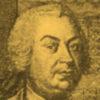 Gottsched, Johann Christoph (1700–66): From 1730 professor of poesy, later of logic and metaphysics in Leipzig. Energetically engaged in literary work on behalf of an elevation of German cultivation and literature, advocating establishing a standardized German in literature based on Saxon usage, albeit following literary models of the French, including in the theater. (Gustav Könnecke, Bilderatlas zur Geschichte der deutschen Nationallitteratur, 2nd ed. [Marburg 1895], 209.)
Gottsched, Johann Christoph (1700–66): From 1730 professor of poesy, later of logic and metaphysics in Leipzig. Energetically engaged in literary work on behalf of an elevation of German cultivation and literature, advocating establishing a standardized German in literature based on Saxon usage, albeit following literary models of the French, including in the theater. (Gustav Könnecke, Bilderatlas zur Geschichte der deutschen Nationallitteratur, 2nd ed. [Marburg 1895], 209.)
Gottsched, Luise Adelgunde Victoria, née Kulmus (1713–62): Playwright, translator, from 1735 wife of Johann Christoph Gottsched, with whom she collaborated (also before their marriage) in various periodicals.
Götz, Joseph Franz von (1754–1815): Sketch artist, painter, and copper engraver in Regensburg who adapted Gottfried August Bürger’s poem “Lenardo und Blandine” to a series of copper engravings anticipating the panels of contemporary comic books.
Graff, Anton (1736–1813): Portrait painter primarily in Dresden. 1756–65 worked in Ansbach, Nuremberg, and Augsburg. From 1766 court painter for the prince elector of Saxony and held a teaching position at the Dresden Academy of Art. His over fifteen hundred portraits include not only the nobility, but also pictures of representatives of the upwardly mobile middle class, including Heinrich von Kleist, Christian Fürchtegott Gellert, and Theodor Körner. His landscapes were influenced by Philipp Otto Runge and Caspar David Friedrich. Did a famous portrait of Schiller (completed in 1791).
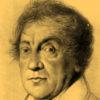 Graff, Johann Jakob (1768—1848): Actor. Had to break off his study of theology and flee Strasbourg after killing another man in a duel. From 1789 performed with itinerant theater companies in Germany before debuting in Weimar in June 1793, where he spent the next forty-seven years as one of the most significant actors, in part during Goethe’s directorship. His breakthrough came with his performance of the role of Wallenstein in the premiere of Schiller’s play. Also known for his performances of the lead roles in Götz von Berlichingen and Nathan the Wise. (Portrait: by J. Schmeller; Goethe Nationalmuseum in Weimar.)
Graff, Johann Jakob (1768—1848): Actor. Had to break off his study of theology and flee Strasbourg after killing another man in a duel. From 1789 performed with itinerant theater companies in Germany before debuting in Weimar in June 1793, where he spent the next forty-seven years as one of the most significant actors, in part during Goethe’s directorship. His breakthrough came with his performance of the role of Wallenstein in the premiere of Schiller’s play. Also known for his performances of the lead roles in Götz von Berlichingen and Nathan the Wise. (Portrait: by J. Schmeller; Goethe Nationalmuseum in Weimar.)
Grapengiesser (Grappengiesser), Karl Joseph Christian (1773–1813): Physician, physicist, and professor of medicine in Berlin, treating, among others, Rahel Levin. Born in Mecklenburg, from 1803 a teacher at the college of surgery in Berlin. Died after contracting typhus as the head physician in a military hospital.
Grasse, François Joseph Paul de (1722–88): French admiral, in the Revolutionary War initially serving under, among others, Count d’Estaing; he is best known for having commanded the French fleet at the Battle of the Chesapeake in September 1781, having come to the aid of George Washington with reinforcements and, blockading the coast, contributing to the eventual British surrender at Yorktown. Unfortunately de Grasse was defeated the following year by Admiral George Brydges Rodney at the Battle of the Saintes, which Caroline also mentions.
Grassi, Josef (1757–1838): Austrian painter. Accepted at the Vienna Academy of Art in 1768. From 1790 in Warsaw, where he became adept at painting idealized portraits whose style continued to exert an influence even after he left in 1795. Moved to Dresden sometime between 1797 and 1799, where from 1800 he taught at the Dresden Academy of Art. Painted a portrait of Queen Luise of Prussia and especially mythological scenes.
Grattenauer, Anna Philippine Elisabeth, née Grohmann (no dates): Wife of the Berlin attorney and justice commissioner Karl Wilhelm Friedrich Grattenauer. Caroline resided with this couple at Lindenstrasse 66 during her visit to Berlin in the spring of 1802.
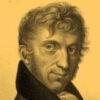 Grattenauer, Karl Wilhelm Friedrich (30 March 1773–23 May 1838): Justice commissioner and notary on the supreme court in Berlin, Wilhelm Schlegel’s friend who also granted access to his hall for Wilhelm’s Berlin lectures in 1801–4, Vorlesungen über schöne Literatur und Kunst. Accompanied Caroline to Berlin from Weimar in March 1802 and had her as a houseguest in his home during her stay there. Studied law in Halle, receiving his doctorate in 1797, worked in Berlin at the Superior Court of Justice until 1804, when he was dismissed because of differences with his colleagues, after which he moved to Breslau. Married to Anna Philippine Elisabeth Grohmann. At the beginning of the discussion of Jewish emancipation in Prussia in the early 1790s, Grattenauer published Ueber die physische und moralische Verfassung der heutigen Juden (Germanien [i.e. Leipzig] 1791), then several works that prompted a flurry of reviews and pamphlets on the subject of Jewish emancipation, including esp. Wider die Juden. Ein Wort der Warnung an alle unsere christliche Mitbürger (Berlin 1803) (six editions), basing opposition to Jewish emancipation on non-religious grounds, making it easier to discriminate against even Jews who had been baptized. Grattenauer opposed changes such as the elimination of poll taxes and incremental rights of citizenship for Jews, and even for “intellectual Jews” who talk about literature but remain “Asiatic alien people,” i.e., a separate race. He also published subsequent explanations: Erklärung an das Publikum über meine Schrift: Wider die Juden (Berlin 1803); Erster Nachtrag zu seiner Erklärung über seine Schrift: Wider die Juden (Berlin 1803). His books Wider die Juden and Erklärung an das Publicum über meine Schrift: Wider die Juden were reviewed in a collective review of five books on Jews and Jewish emancipation in the Allgemeine Literatur-Zeitung (1804) 108 (Monday, 9 April 1804) 57–64. See Jonathan M. Hess, Germans, Jews and the Claims of Modernity (New Haven 2002), chap. 5, “Jewish Baptism and the Quest for World Rule. Perceptions of Jewish Power around 1800.” (Portrait: Wien, Österreichische Nationalbibliothek, Bildarchiv und Grafiksammlung, Inv.-Nr. PORT_00015981_01; Österreichische Nationalbibliothek; Bilddatei: onB3833977.)
Grattenauer, Karl Wilhelm Friedrich (30 March 1773–23 May 1838): Justice commissioner and notary on the supreme court in Berlin, Wilhelm Schlegel’s friend who also granted access to his hall for Wilhelm’s Berlin lectures in 1801–4, Vorlesungen über schöne Literatur und Kunst. Accompanied Caroline to Berlin from Weimar in March 1802 and had her as a houseguest in his home during her stay there. Studied law in Halle, receiving his doctorate in 1797, worked in Berlin at the Superior Court of Justice until 1804, when he was dismissed because of differences with his colleagues, after which he moved to Breslau. Married to Anna Philippine Elisabeth Grohmann. At the beginning of the discussion of Jewish emancipation in Prussia in the early 1790s, Grattenauer published Ueber die physische und moralische Verfassung der heutigen Juden (Germanien [i.e. Leipzig] 1791), then several works that prompted a flurry of reviews and pamphlets on the subject of Jewish emancipation, including esp. Wider die Juden. Ein Wort der Warnung an alle unsere christliche Mitbürger (Berlin 1803) (six editions), basing opposition to Jewish emancipation on non-religious grounds, making it easier to discriminate against even Jews who had been baptized. Grattenauer opposed changes such as the elimination of poll taxes and incremental rights of citizenship for Jews, and even for “intellectual Jews” who talk about literature but remain “Asiatic alien people,” i.e., a separate race. He also published subsequent explanations: Erklärung an das Publikum über meine Schrift: Wider die Juden (Berlin 1803); Erster Nachtrag zu seiner Erklärung über seine Schrift: Wider die Juden (Berlin 1803). His books Wider die Juden and Erklärung an das Publicum über meine Schrift: Wider die Juden were reviewed in a collective review of five books on Jews and Jewish emancipation in the Allgemeine Literatur-Zeitung (1804) 108 (Monday, 9 April 1804) 57–64. See Jonathan M. Hess, Germans, Jews and the Claims of Modernity (New Haven 2002), chap. 5, “Jewish Baptism and the Quest for World Rule. Perceptions of Jewish Power around 1800.” (Portrait: Wien, Österreichische Nationalbibliothek, Bildarchiv und Grafiksammlung, Inv.-Nr. PORT_00015981_01; Österreichische Nationalbibliothek; Bilddatei: onB3833977.)
Grätzel (Gräzel), Charlotte (Lotte): Presumably the daughter of Johann Heinrich Grätzel in Göttingen.
Grätzel (Gräzel), Johann Heinrich (1736–1820): Wool and fabric manufacturer in Göttingen (the “Grätzelhaus” there is named after him; in 1929, the City Café was still located in his house in Göttingen). Came to Göttingen as an apprentice in dyeing before the university was founded, thereafter acquiring a modest fortune through various inventions in dyeing and textiles, all of which he used in expanding his factory. His camlets in various colors were especially popular (the Jesuits used them). Gräztel’s son continued the business. Possibly related to the Michaelis family; he gave a party for Caroline at her first wedding.
Graun, Karl Heinrich (1703/04–59): Singer, composer. From 1714 attended school in Dresden, where he received instruction in various instruments, in composition, and especially in singing. From 1725 performed as a tenor in Braunschweig, later becoming assistant conductor and composing several operas. From 1735 appointment by the Prussian crown prince (later Friedrich II) to Rheinsberg, from 1740 royal orchestra conductor charged with establishing an opera house in Berlin, which opened in 1742. Graun’s compositions include 30 Italian-style operas, church music, and the Passion cantata Der Tod Jesu (1755; text by Karl Wilhelm Ramler).
Gray, Stephen (1696–1736): English physician, member of the Royal Society. Discovered ca. 1720 that electricity could be excited by the friction of hair, wool, silk, and paper, leading him to the concepts of conductors and nonconductors in electricity, suggesting thus also the concept of electrical insulation. Initially used the terms “vitreous” and “resinous” for what has since come to be known as “positive” and “negative” electricity. His experiments can be viewed as a forerunner of the invention of the telegraph; he suspended a thread 886 feet long by loops of silk and sent over it a current of electricity produced by rubbing glass.
Greifenklau, Philipp Anton Count von (dates unknown): Master of the Horses in Würzburg; from 5 September 1806 bore the title “Excellence” at the initiative of the new prince elector, Ferdinand III. Owned the house at Rennweg 1.
Grellmann, Anna Christina (Christel) Carolina, née Heinze: Daughter of Johann Michael Heinze, rector of the Gymnasium in Weimar; from 25 April 1791 married (her second marriage) to Heinrich Moritz Gottlieb Grellmann. Her sister Dorothea was married to Carl Friedrich Günther Ruprecht of the Göttingen publishing house (later Vandenhoeck & Ruprecht).
Grellmann, Heinrich Moritz Gottlieb (1753–1804): Attended the Gymnasium in Weimar till 1776 (where he was also friends wtih August Kotzebue), then studied theology in Jena till Easter 1781, then in Göttingen, where he attained his masters in 1783 and became a professor in 1787, ultimately full professor of philosophy in 1794. From 25 April 1791 married to Christel, née Heinze (whose sister Dorothea married the publisher Carl Friedrich Günther Ruprecht). In Göttingen, he experienced various troubles, frustrations, and, in his own opinion, professional slights at the university, however, including financial, and then in 1804 accepted an appointment as Hofrath and professor of statistics and universal history in Moscow, though he died in October of that same year after barely having begun his career there in August.
Grétry, André-Ernest-Modest (1741–1813): Belgian composer, lived primarily in Paris, famous for comic operas (Zémir et Azor [1771], with Marmontel).
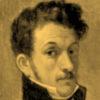 Greyerz, Gottlieb von (29 March 1778–16 May 1855): A native of Bern, Switzerland. Initially studied law and intended to enter state service, but changed to forestry, studying in Heidelberg and Göttingen, then practicing in the Harz Mountains. Wounded in 1798 participating in the French campaign. The poor job prospects in Bern prompted him to accept a position as a Royal Bavarian Senior Forestry Official in Stoffenried, just southeast of Ulm, where he eventually advanced in rank. From 1809 again participated in the French campaign, this time against Tyrol. From 1810 forestry inspector in Augsburg, then returned to Bern. On 9 May 1805 he married Claire Forster. (Portrait: Burgerbibliothek Bern.)
Greyerz, Gottlieb von (29 March 1778–16 May 1855): A native of Bern, Switzerland. Initially studied law and intended to enter state service, but changed to forestry, studying in Heidelberg and Göttingen, then practicing in the Harz Mountains. Wounded in 1798 participating in the French campaign. The poor job prospects in Bern prompted him to accept a position as a Royal Bavarian Senior Forestry Official in Stoffenried, just southeast of Ulm, where he eventually advanced in rank. From 1809 again participated in the French campaign, this time against Tyrol. From 1810 forestry inspector in Augsburg, then returned to Bern. On 9 May 1805 he married Claire Forster. (Portrait: Burgerbibliothek Bern.)
 Gries, Johann Diederich (1775–1842): Translator, writer, native of Hamburg. Initially destined for a career in business, Gries studied law in Jena from October 1795, where he soon became acquainted with most of the literary figures of the time in both Jena and Weimar, being especially good friends with Schelling, whom he accompanied back to Jena from Dresden on 1 October 1798 and from Bamberg in October 1800 after Auguste’s death. He published his first poems in Schiller’s periodical Die Horen and in Schiller’s Musenalmanach. He studied in Göttingen in 1799–1800 to finish his degree, then returned to Jena on 28 March 1800 to oversee the publication of his translation of Tasso, also receiving his Dr. iur. in Jena in August 1800. While in Göttingen he secured books for Friedrich and Wilhelm Schlegel, and in return Wilhelm took care of the proofing of his translation of Tasso. He lived in Göttingen, Heidelberg, Stuttgart, and then Jena again before returning to Hamburg in 1837 for health reasons. Although his poetry reflected the literary conventions of the time (occasional poems), he began translating while studying law after losing his inheritance. The quality of his translations of Ariosto, Tasso, and Calderon (the latter in seven volumes) put him on level with Wilhelm Schlegel and constitute a not inconsiderable contribution to introducing European literature at large to the German reading public (Gries learned a great deal from Wilhelm Schlegel concerning the art of translation and rhyming). It is perhaps worth noting that Gries, of all the persons involved in the florescence of Jena during the period when Caroline — of whom he was a great admirer — and the early Romantics were there, was perhaps more sentimentally attached to the town itself than anyone else, returning again and again during his life and even renting his same room again, trying to prolong at least a bit of the former magic. His biography, Aus dem Leben J. D. Gries, is an important source of information about the Jena Romantic circle. For the texts of poems Gries addressed to Caroline and Wilhelm, see the supplementary appendix Johann Diederich Gries: Poems to Caroline and Wilhelm Schlegel. (Portrait: Christian Friedrich Duttenhofer, in Klaus Günzel, Die deutschen Romantiker [Zürich 1995].)
Gries, Johann Diederich (1775–1842): Translator, writer, native of Hamburg. Initially destined for a career in business, Gries studied law in Jena from October 1795, where he soon became acquainted with most of the literary figures of the time in both Jena and Weimar, being especially good friends with Schelling, whom he accompanied back to Jena from Dresden on 1 October 1798 and from Bamberg in October 1800 after Auguste’s death. He published his first poems in Schiller’s periodical Die Horen and in Schiller’s Musenalmanach. He studied in Göttingen in 1799–1800 to finish his degree, then returned to Jena on 28 March 1800 to oversee the publication of his translation of Tasso, also receiving his Dr. iur. in Jena in August 1800. While in Göttingen he secured books for Friedrich and Wilhelm Schlegel, and in return Wilhelm took care of the proofing of his translation of Tasso. He lived in Göttingen, Heidelberg, Stuttgart, and then Jena again before returning to Hamburg in 1837 for health reasons. Although his poetry reflected the literary conventions of the time (occasional poems), he began translating while studying law after losing his inheritance. The quality of his translations of Ariosto, Tasso, and Calderon (the latter in seven volumes) put him on level with Wilhelm Schlegel and constitute a not inconsiderable contribution to introducing European literature at large to the German reading public (Gries learned a great deal from Wilhelm Schlegel concerning the art of translation and rhyming). It is perhaps worth noting that Gries, of all the persons involved in the florescence of Jena during the period when Caroline — of whom he was a great admirer — and the early Romantics were there, was perhaps more sentimentally attached to the town itself than anyone else, returning again and again during his life and even renting his same room again, trying to prolong at least a bit of the former magic. His biography, Aus dem Leben J. D. Gries, is an important source of information about the Jena Romantic circle. For the texts of poems Gries addressed to Caroline and Wilhelm, see the supplementary appendix Johann Diederich Gries: Poems to Caroline and Wilhelm Schlegel. (Portrait: Christian Friedrich Duttenhofer, in Klaus Günzel, Die deutschen Romantiker [Zürich 1995].)
Gries, Karl (1778–1824): Brother of Johann Diederich Gries. Studied law in Jena with his brother. Later president of the Hamburg Lower Court.
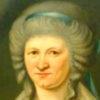 Griesbach, Friederike Juliane, née Schütz (1755–1831): Sister of the philologist Christian Gottfried Schütz and from 1775 wife of Johann Jakob Griesbach in Jena. (Portrait ca. 1800 by unknown artist.)
Griesbach, Friederike Juliane, née Schütz (1755–1831): Sister of the philologist Christian Gottfried Schütz and from 1775 wife of Johann Jakob Griesbach in Jena. (Portrait ca. 1800 by unknown artist.)
 Griesbach, Johann Jakob (1745–1812): Professor of New Testament in Jena from 1775 and the first scholar to apply literary analysis systematically to the Gospels. He also made an enduring contribution to New Testament textual studies in producing an edition of the Greek New Testament (2 vols., 1775–77) that was the first in Germany to abandon the traditional “received text” of the time; is generally viewed as the father of New Testament textual criticism. The Griesbach family also owned two houses in Jena that play various roles in the cultural history of the city. When he was a boy, his family lived for a time in Frankfurt, and his mother is the Griesbach mentioned in Goethe’s Dichtung und Wahrheit. (Portrait ca. 1800 by Johann Carl Bock.)
Griesbach, Johann Jakob (1745–1812): Professor of New Testament in Jena from 1775 and the first scholar to apply literary analysis systematically to the Gospels. He also made an enduring contribution to New Testament textual studies in producing an edition of the Greek New Testament (2 vols., 1775–77) that was the first in Germany to abandon the traditional “received text” of the time; is generally viewed as the father of New Testament textual criticism. The Griesbach family also owned two houses in Jena that play various roles in the cultural history of the city. When he was a boy, his family lived for a time in Frankfurt, and his mother is the Griesbach mentioned in Goethe’s Dichtung und Wahrheit. (Portrait ca. 1800 by Johann Carl Bock.)
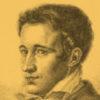 Grimm, Jacob Ludwig (1785–1863) and Wilhelm Karl (1786–1859): Philologists and folklorists, studied in Marburg and then lived variously in Kassel, Göttingen, and Berlin as professors and librarians. Followed the example set by Clemens Brentano and Achim von Arnim is collecting and publishing German folk and fairy tales. Also initiated the voluminous and exhaustive dictionary of the German language and, in Jacob’s case, published a German grammar still considered as a classic text in German language studies, not least for its formulation of certain linguistic developments in German. (Portraits in order: Jakob, Wilhelm: in Gustav Könnecke, Bilderatlas zur Geschichte der deutschen Nationallitteratur, 2nd ed. [Marburg 1895], 355.)
Grimm, Jacob Ludwig (1785–1863) and Wilhelm Karl (1786–1859): Philologists and folklorists, studied in Marburg and then lived variously in Kassel, Göttingen, and Berlin as professors and librarians. Followed the example set by Clemens Brentano and Achim von Arnim is collecting and publishing German folk and fairy tales. Also initiated the voluminous and exhaustive dictionary of the German language and, in Jacob’s case, published a German grammar still considered as a classic text in German language studies, not least for its formulation of certain linguistic developments in German. (Portraits in order: Jakob, Wilhelm: in Gustav Könnecke, Bilderatlas zur Geschichte der deutschen Nationallitteratur, 2nd ed. [Marburg 1895], 355.)
Grimm, Johann Friedrich Karl (1737–1821) and his wife, Louise, née Sulzer (†1777 or 1778): Originally from Eisenach, studied medicine in Göttingen, earning his degree in 1758. From 1768 personal physician to the Duke of Saxony-Gotha in Gotha (Friedrich III), becoming a privy Hofrat and inspector of the mineral springs in Ronneburg, later also trusted physician to Duke Ernst II in Gotha. Botanist, scholar of ancient Greek medicine, translator of the writings of Hippocrates (4 vols.; 1781–92). Cared for Friedrich Wilhelm Gotter during the latter’s final illness.
Grimm, Ludwig Emil (1790–1863): Painter, engraver, brother of Jacob and Wilhelm Grimm. Trained initially in Kassel, Heidelberg, and from 1809 at the Academy of Fine Arts in Munich. Military service in 1814, then visited Italy in 1816. From 1817 back in Kassel with his brothers. In Munich Grimm apparently wanted to do a sketch or painting of Schelling but according to Bettina Brentano was turned down as being too inexperienced.
Gros, Karl Heinrich (1765–1840): Legal scholar who was a pupil in Bebenhausen from 1783 to 1788, then studied in Tübingen between 1788 and 1793, then in Jena and Göttingen, becoming a professor in Erlangen in 1796. Schelling, who was born in 1775 and whose father was head of the school in Bebenhausen during Schelling’s youth, refers to Gros as “one of his teachers,” which means that when Gros himself was between 16 and 18 years old, he must have given Schelling instruction in Bebenhausen when the latter was between 6 and 8 years old.
Gross, Carl (Karl) Albrecht (Adolf) (3 August 1764–1 February 1817): Consistory secretary, senior finance secretary in Stuttgart. From 12 October 1786 married to Johanna Charlotte Reisig of Tübingen (8 May 1762–1797); from 25 June 1798 married to Christiane Helene Mittler (10 April 1772–1804); from 26 July 1804 married to Beate Schelling, Schelling’s sister. Groß (Gross) came from the large Stuttgart family (7 children) of David Eberhard (1724–86) and Marie Johanne Elisabeth, née Mittler that eventually lived in the Geisburg (Gaisburg) section of Stuttgart. His father and grandfather were similarly government administrators.
Gross, Friedrich (Fritz) (1805–July 1807): Son of Beate and Adolf Gross.
Grosse, Karl (Carl) Friedrich August (1768 [1761?]–1847) (pseudonyms include Marquis von Parnusa, Count Edouard Romeo Vargas, Count Vargas-Bedemar): Writer, translator, geologist, though also con artist. The son of a Magdeburg physician, from 1786 he initially studied medicine in Göttingen, from 1788 in Halle, from 1790 back in Göttingen (though he also seems to have left that same year; see Caroline’s letter to Philipp Michaelis on 22 June 1791 [letter 102]: “If Louise still wants to come stay with me 10 or 11 months now after Gr[osse]’s departure, I am fine with it”), having already published several works on popular philosophy and anthropology. Meusel (see below) identifies him as a Hofrath and Forstrath for Count von Stolberg-Wernigerode, while others say he “claimed” to be such, and also a knight of Malta, a marquis, and a nobleman (Count von Vargas). “Claims” (so Meusel, see below) to have spent time in the military in Spain (Julius Steinberger, Erinnerungen 131, suggests [unfortunately without documentation] that he also “allegedly went missing in Spain”), lived in Italy and France; from 1809 he lived under the name Count Vargas-Bedemar in Copenhagen, where he occupied high office in the Danish government (see the suspicions of Luise Wiedemann, Erinnerungen, to whom Grosse was allegedly engaged for a time). Became a member of various scientific societies as a geologist. His novellas and novels reflect the genre of trivial literature of the time and in some ways anticipate romantic motifs, esp. Der Genius. Aus den Papieren des Marquis C. v. G. (Halle 1790–94). Caroline refers to Memoiren des Marquis von G*** (Berlin 1787–98); English trans. Horrid Mysteries. A Story. From the German of the Marquis of Grosse, trans. P. Will (4 vols., London 1796). Concerning his acquaintance with the Michaelis family, see esp. Caroline to Friedrich Ludwig Wilhelm Meyer on 12 August 1792 (letter 114) with notes and supplementary appendix. For additional bibliographical information and an example of the problems his pseudonyms generated for others, see supplementary appendix Karl Grosse.
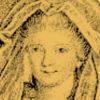 Grossmann, Carolina Sophia Augusta, née Hartmann, widowed Flittner (1752–28 March 1784): Actress, native of Gotha, daughter of the senior Ducal Saxon-Gotha police chief Johann Christian Hartmann, mother of Friederike Unzelmann, from 1774 wife of Gustav Friedrich Wilhelm Grossmann. Grossmann’s “beautiful wife” whom Caroline mentions in letter 31. (Portrait: in Gustav Könnecke, Bilderatlas zur Geschichte der deutschen Nationallitteratur, 2nd ed [Marburg 1895], 341.)
Grossmann, Carolina Sophia Augusta, née Hartmann, widowed Flittner (1752–28 March 1784): Actress, native of Gotha, daughter of the senior Ducal Saxon-Gotha police chief Johann Christian Hartmann, mother of Friederike Unzelmann, from 1774 wife of Gustav Friedrich Wilhelm Grossmann. Grossmann’s “beautiful wife” whom Caroline mentions in letter 31. (Portrait: in Gustav Könnecke, Bilderatlas zur Geschichte der deutschen Nationallitteratur, 2nd ed [Marburg 1895], 341.)
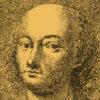 Grossmann, Gustav Friedrich Wilhelm (1743–96): Actor, theater director, playwright. Initially studied law and was from 1767 a Prussian legation officer in Danzig, leaving that office in 1772 to pursue a career in the theater in Berlin. Wrote reviews and plays himself and in 1774 joined the itinerant company of Abel Seyler, establishing his own company in Hannover in 1778. His reputation enabled him to perform at various courts over the next few years before returning to direct the theater in Hannover 1787–96 (Schiller attended a performance of his own play Kabale und Liebe in Frankfurt performed by his company). During the 1790s came into conflict with the authorities for promoting the ideals of the French Revolution and ultimately died of the effects of a temporary imprisonment. Promoted contemporary Storm-and-Stress authors and premiered some of the Schiller’s first plays. His own plays generally reflect the middle-class sentimental plays of the time. Stepfather of the actress Friederike Unzelmann. (Portrait: in Gustav Könnecke, Bilderatlas zur Geschichte der deutschen Nationallitteratur, 2nd ed [Marburg 1895], 341.)
Grossmann, Gustav Friedrich Wilhelm (1743–96): Actor, theater director, playwright. Initially studied law and was from 1767 a Prussian legation officer in Danzig, leaving that office in 1772 to pursue a career in the theater in Berlin. Wrote reviews and plays himself and in 1774 joined the itinerant company of Abel Seyler, establishing his own company in Hannover in 1778. His reputation enabled him to perform at various courts over the next few years before returning to direct the theater in Hannover 1787–96 (Schiller attended a performance of his own play Kabale und Liebe in Frankfurt performed by his company). During the 1790s came into conflict with the authorities for promoting the ideals of the French Revolution and ultimately died of the effects of a temporary imprisonment. Promoted contemporary Storm-and-Stress authors and premiered some of the Schiller’s first plays. His own plays generally reflect the middle-class sentimental plays of the time. Stepfather of the actress Friederike Unzelmann. (Portrait: in Gustav Könnecke, Bilderatlas zur Geschichte der deutschen Nationallitteratur, 2nd ed [Marburg 1895], 341.)
Grote, Wilhelm and Friedrich von: Law students in Göttingen 1785–87. Their mother and cousin (Blankenhagen) also seem to have been present in Göttingen.
 Grothaus, Friedrich Wilhelm Karl Ludwig von (12 April 1747–4 November 1801): Attended the institute for pages in Hannover, then studied mathematics at the university in Göttingen while already a member of the military, which he left in 1767 as a lieutenant, then rejoined in 1772. A gifted military thinker who moved in lofty military circles, including that of Friedrich the Great. His later life is obscure, and he and his brother Nikolaus Anton Heinrich Julian von Grothaus have often been mistaken in biographies. Died in the mental institute in Bayreuth. Goethe made his acquaintance in Weimar in 1779 and mentions him in his Campaign in France. (Portrait: Silhouetten-Sammlung Schubert, Handschriften Abteilung der SUB Göttingen.)
Grothaus, Friedrich Wilhelm Karl Ludwig von (12 April 1747–4 November 1801): Attended the institute for pages in Hannover, then studied mathematics at the university in Göttingen while already a member of the military, which he left in 1767 as a lieutenant, then rejoined in 1772. A gifted military thinker who moved in lofty military circles, including that of Friedrich the Great. His later life is obscure, and he and his brother Nikolaus Anton Heinrich Julian von Grothaus have often been mistaken in biographies. Died in the mental institute in Bayreuth. Goethe made his acquaintance in Weimar in 1779 and mentions him in his Campaign in France. (Portrait: Silhouetten-Sammlung Schubert, Handschriften Abteilung der SUB Göttingen.)
Grotthuss, Sara von, née Meyer (1763–1828): Daughter of a wealthy Jewish merchant in Berlin, sister of Marianne von Eybenberg in Berlin, personal friend of Rahel Levin. Although born a Jew, she, like her sister, later converted to Christianity. Also like her sister, was acquainted with Goethe from 1795 after a stay in Karlsbad. At fifteen she was married to Lipmann Wolff, whom she did not love, though even in her second marriage, to Baron von Grotthuss, she was not happy, and was known for being rather vain and chronically anxious.
Gruber, Johann Gottfried (29 November 1774–7 August 1851): Lexicographer, literary historian. Studied in Leipzig. Prolific writer early on, also publishing works of popular philosophy and pedagogy along with popular novels, translations, and political commentary. In 1803 acquired the right to lecture in Jena on philosophy and aesthetics, but moved briefly to Weimar in 1805. From 1811 professor in Wittenberg, from 1815 in Halle-Wittenberg (combined university), where he became rector in 1821.
Grüneisen, Karl Christian Heinrich (1765–1831): Writer, official in the Ministry of Culture in Stuttgart, member of a popular literary circle, founding editor of the Morgenblatt für Gebildete Stände.
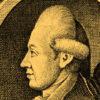 Gruner, Christian Gottfried (1744–1815): Physician, medical historian. Studied medicine in Leipzig and Halle, receiving his doctorate in 1747, practicing then in Breslau. From 1773 professor of theoretical medicine and botany in Jena. One of the most significant medical historians of the time, publishing also on Hippocrates (1772), syphilis (1793), and the general history of disease (1774). Achieved a certain notoriety for his aggressive behavior and inclination to engage in intrigue, including in the atheism dispute involving Fichte. (Portrait by Georg Christoph Schmidt.)
Gruner, Christian Gottfried (1744–1815): Physician, medical historian. Studied medicine in Leipzig and Halle, receiving his doctorate in 1747, practicing then in Breslau. From 1773 professor of theoretical medicine and botany in Jena. One of the most significant medical historians of the time, publishing also on Hippocrates (1772), syphilis (1793), and the general history of disease (1774). Achieved a certain notoriety for his aggressive behavior and inclination to engage in intrigue, including in the atheism dispute involving Fichte. (Portrait by Georg Christoph Schmidt.)
Grunow, Eleonore, née Crüger (1769/70–1837): Wife of the Berlin pastor August Christian Wilhelm Grunow (1764–1831). She was also, however, a friend and significant love interest of Schleiermacher until his departure from Berlin in June 1802. Eleonore had been promised to Grunow when she was twelve years old and married him at fifteen, but essentially against her own better judgment and more out of a sense of religiously based duty. When Schleiermacher met her, she was extremely unhappy, and the relationship that developed between them made Schleiermacher hope that she might leave Grunow for her own sake, though as it turns out he also let her know, in an impetuous outburst during a discussion about her reasons for not leaving Grunow, that she could afterward become his wife. She could never bring herself to leave her husband, however, unhappy as she was, and the relationship with Schleiermacher ended in October 1805. Her letters and Schleiermacher’s relationship with her seem to have provided the basis for the otherwise fictional letters and diary of “Eleonore” in Schleiermacher’s Vertraute Briefe über Friedrich Schlegels Lucinde.
Guarini, Giovanni Battista (1538–1612): Italian poet, playwright, courtier, and diplomat, particularly important for his pastoral drama Il Pastor fido (The faithful shepherd) (1590). He also called the poem a “pastoral tragicomedy,” and it remained one of the most popular works of secular literature in Europe for almost two hundred years. Many of his poems were set to music by the madrigal composers. Wilhelm Schlegel translated selections from Il Pastor fido.
 Gubitz, Friedrich Wilhelm (1786–1870): Multifaceted Berlin wood-block engraver, journalist, publisher, playwright, and theater critic. Gubitz’s father worked for the publishers Breitkopf in Leipzig and then from 1789 Unger in Berlin. Gubitz himself began exhibiting carvings quite successfully at fifteen years old, thereafter taking the art form in new, more modern direction and even, after 1813, instructing Friedrich Unzelmann, son of the actress Friederike Unzelmann. Completely his law degree in Jena in 1805, thereafter becoming a member of the Berlin Academic of Art. From 1818 also prolific as a joiurnlaist and theater critic, since 1816 also as editor of the Berlin periodical Der Gesellschafter, which published Heinrich Heine’s first poems. Also published a calendar between 1835 and 1869 with each issue containing more than 100 illustrations of wood carvings. (NDB 7 [1966], 247.) (Portrait: Die Vossische Zeitung: Geschichtliche Rückblicke auf drei Jahrhunderte (1904), 95.)
Gubitz, Friedrich Wilhelm (1786–1870): Multifaceted Berlin wood-block engraver, journalist, publisher, playwright, and theater critic. Gubitz’s father worked for the publishers Breitkopf in Leipzig and then from 1789 Unger in Berlin. Gubitz himself began exhibiting carvings quite successfully at fifteen years old, thereafter taking the art form in new, more modern direction and even, after 1813, instructing Friedrich Unzelmann, son of the actress Friederike Unzelmann. Completely his law degree in Jena in 1805, thereafter becoming a member of the Berlin Academic of Art. From 1818 also prolific as a joiurnlaist and theater critic, since 1816 also as editor of the Berlin periodical Der Gesellschafter, which published Heinrich Heine’s first poems. Also published a calendar between 1835 and 1869 with each issue containing more than 100 illustrations of wood carvings. (NDB 7 [1966], 247.) (Portrait: Die Vossische Zeitung: Geschichtliche Rückblicke auf drei Jahrhunderte (1904), 95.)
Guercino, il (Giovanni Francesco Barbieri) (1591–1666): Prolific Italian Baroque painter of the Bolognese school. Known as “Guercino” (squinter) because he was cross-eyed. Largely self-taught, inspired by the classical reforms of Lodovico Carracci. Paintings often characterized by movement, masterful use of color and shading, and intense feeling, though his style underwent considerable change during his lifetime. In 1621 Pope Gregory XV summoned him to Rome, where he stayed until 1623, the works he produced there (e.g., Aurora) being perhaps his most original paintings. After Gregory’s death in 1623, he went back to Emilia. On the death of Guido Reni (1642), who despised Guercino, he moved to Bologna, where he took over Reni’s workshop.
Günther, Wilhelm Christoph (1755–1826): Weimar theologian, from 1781 assistant preacher in Weimar on the recommendation of Johann Gottfried Herder, but from 1790 returned to Mattstedt to succeed his father as pastor. From 1801 member of the ecclesiastical section of the High Consistory in Weimar, court preacher, and later director of the consistory. Commissar of the territorial school funds, member of the police administration and overseer of prisons and infirmary. Although he was to succeed Herder in Weimar, he declined, becoming instead director of the orphanage. Performed the marriage ceremony in 1806 between Goethe and Christiane Vulpius.
